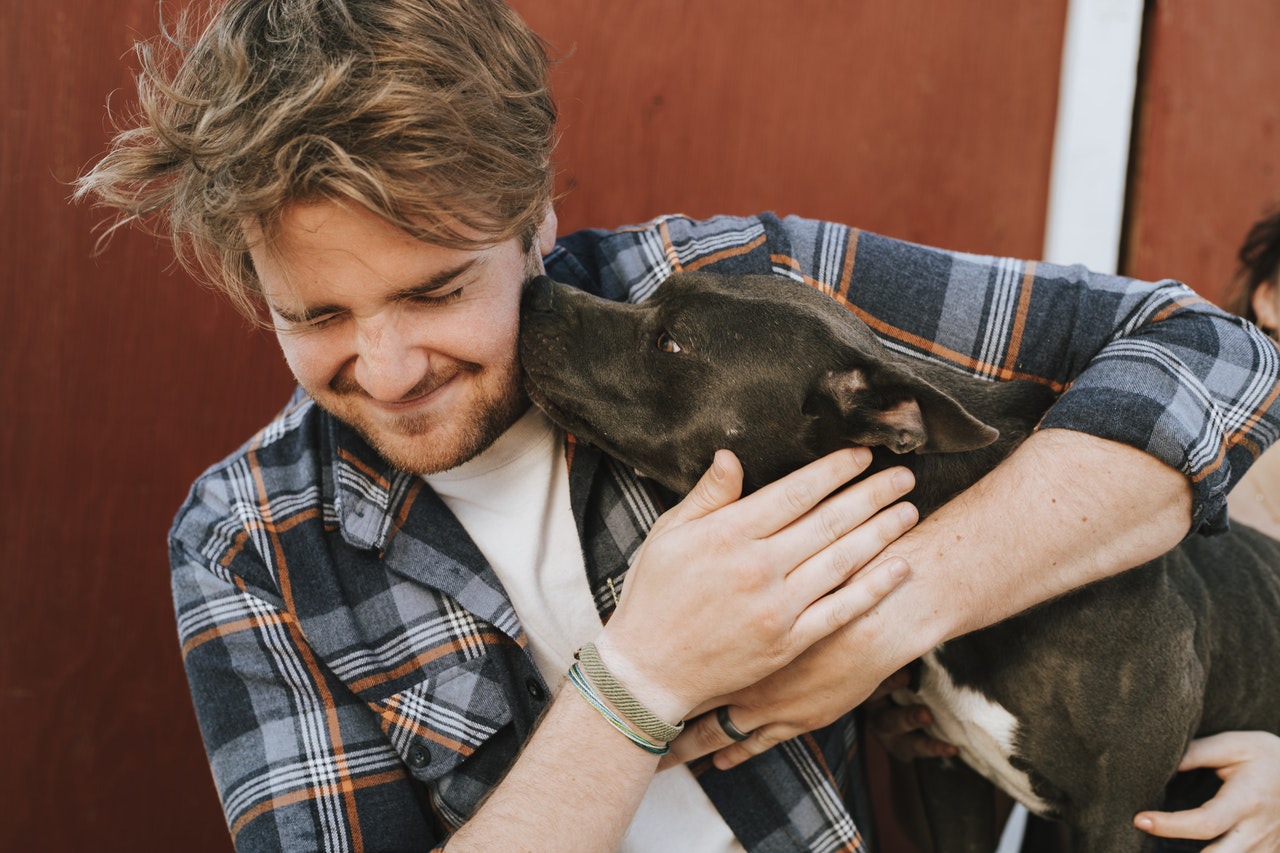2020-12-30

Emotional support animals (ESAs) are known as dependable companions for individuals with mental or emotional disorders. In contrast to service dogs, emotional support dogs do not require special training and provide physical assistance to disabled people. However, it does not mean that emotional support dogs should be untrained or behave badly. Although there is no law or regulation that requires you to train your emotional support dog prior to registration, a well-behaved and well-trained ESA dog is easily recognized by others, especially when you travel with it in an aircraft cabin or are looking for new accommodation. If you are planning to adopt or buy a dog for emotional support, or if you intend to train your pet dog, you should follow the guidelines below before you start the training.
In this article:
1. Characteristics of Emotional Support Dogs
3. Teach Your Dog to Calm Your Anxiety
Step #1: On the sofa with “Paws up” command
Step #4: Keep your dog on the sofa
1. Characteristics of Emotional Support Dogs
The characteristics of a puppy depend almost entirely on its parents and breed. Some dogs were born aggressive, over-excited, or timid, but it does not mean that these imperfect personalities could never become emotional support dogs if they received the training to do so. An approximately one-year-old with a calm and responsible personality can start training. It is also better to look for breeds that are more human-orientated and eager to learn, such as Golden Retrievers and Poodles.
2. Basic Obedience Training
After choosing a dog, you should start the course with obedience training, including “Sit”, “Down”, ”Come”, “Stop”, “Heel”, etc. The sooner you start with these lessons, the easier it will be to train your emotional support dog. Apart from obedience training, going outside to socialize should also be trained to prevent anti-social behavior such as barking, jumping, lunging or begging for food.
3. Teach Your Dog to Calm Your Anxiety
Many of the people who really need an emotional support dog often suffer from anxiety, autism, and are susceptible to self-harming behavior for various reasons. Many studies suggest that the presence of a dog helps to calm these patients and reduce the possibility of recurring stressful attacks. In these cases, appropriately trained, emotional support dogs apply appropriate pressure on the owners’ body, chest or other body parts depending on the size of the dog. For example, a small Papillon would lie directly on the owner’s chest, but a tall Alaskan Malamute has to place its head or feet across the owner's lap or legs. This method is especially suitable for people who suffer from airsickness. Here is how to teach your dog this skill.
Step #1: On the sofa with “Paws up” command
If your dog has to get used to sitting on the sofa, you may need to tempt it with some tasty treats. The first step is to show your dog the treats, whilst at the same time slowly moving to the sofa and giving the “Paws up” command. Give it the treat when you are near the sofa.
Step #2: Repeat the exercise
The result of the exercise depends on whether your dog is willing to join you on the sofa, so you may need to practice it patiently, especially with an adult dog. If you have a small dog, the main goal is to have all four paws on the sofa. Whilst it is in the nature of a large breed to place only the front paws or head on the sofa. Repeat the “paws up” exercise with treats until it understands what this command means.
Step #3: “Paws off” command
The next part is to train your dog to take its paws away under the “paws off” command. This process wants to reverse the “paws up” exercise and wants to take your dog off the sofa with the “paws off” command.
Step #4: Keep your dog on the sofa
To calm your anxiety, your dog should apply physical pressure on you. In the case of a small dog, it is best to call it to hug you while it is lying vertically beside your body, with its paws on your shoulder and its head near yours. While a large dog will put its paws on your lap or legs and keep its head down when you are in a sitting position. After you say “paws up”, followed by the command “down” as soon as it sits or lies next to you. Give it a treat after completing this task and order it to put its “paws down”.
After a while try to command it without giving it treats to realize that this is a task rather than a reward game.
Emotional Support Dog Certification
While your dog does not need a certificate or a license to provide you with emotional support and companion, there are many benefits to register and certify your dog as an emotional support animal. For example, you will be able to live with your dog even in places that have a no-pet policy; you will also be able to fly with your dog if you follow the ESA airline policy and inform the airline 48 hours ahead.